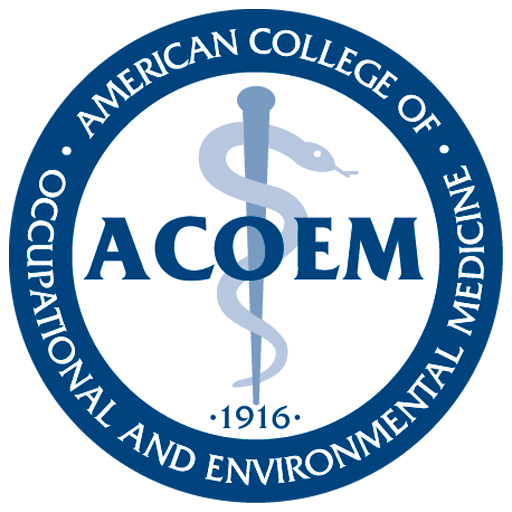
05: Safety In the Workplace
Almost all forms of human endeavor involve risk, including the risk of physical harm. Even such simple tasks as driving a nail or using a screwdriver court potential injury. To maintain a workforce at maximum output, an employer needs to take steps to reduce, if not eliminate, that risk. For the most part, minimizing risk involves passive safeguards, such as barriers or housings around hazardous areas or moving parts to prevent injury; protective equipment to reduce exposure to potentially harmful substances or environmental conditions; or active training to ensure that dangerous performance errors are avoided. Not all potential for harm, however, can be addressed through such interventions.
In some jobs, the risks are broader. Not only is the individual worker put at risk if he or she makes an error: others can face harm, or even death, as well. Therefore, definitions of what constitute safety-sensitive jobs focus not only on workers’ responsibility for their own safety but also for the safety of other workers and the general public. Because of the possible risk to other workers and the public, health care professionals must ensure that those whose work involves safety-sensitive activities are not impaired either physically or mentally, because even very minor impairment can have dire consequences. Let’s assume, for example, that the difference between a loaded semi-trailer truck either hitting or missing another vehicle is approximately one-half inch. For a vehicle traveling at 30 miles per hour, a difference of less than one millisecond in reaction time—hardly perceptible to the driver—can have devastating consequences.
What types of jobs are safety-sensitive? While there is no exhaustive list, in general, those that involve handling of toxic, corrosive, or explosive materials; that involve rapid decision making amid quickly changing situations; or that have the potential to jeopardize the life and limb of the worker and/or others should be considered safety sensitive. An extensive list of high-risk, safety-sensitive jobs is available on the Connecticut Department of Labor website at: https://www.ctdol.state.ct.us/wgwkstnd/highrisk.htm. Examples range from nursing and handling radioactive materials to piloting commercial aircraft or semi-trailer trucks to working as a flagman during highway repairs or as a van driver for wheelchair transport. Particularly when prescribing medication that may impair an individual or diagnosing or assessing a potentially impairing problem, it is important to ask what the individual does for a living, to be sure that there is little or no likelihood that the medication or diagnosis will cause the worker to have a potentially hazardous lapse.
Fitness to Perform Duties
In general, medical practitioners evaluating whether an individual is fit to perform tasks of limited safety sensitivity, or an injured worker is fit to return to such work, must consider whether there is evidence that the worker is significantly impaired. Most of the time that simply involves being sure that the worker has the physical strength, endurance, and physical mobility to perform the tasks at hand. Sometimes, in the case of a contagious ailment, providers must assess the worker’s potential to infect others, as well. However, for safety-sensitive tasks, there are other impairments to consider:
- Sensory Perception: This factor primarily involves sight and hearing. A worker who cannot hear an alarm, for instance, is at increased risk of an accident. For example, the driver of a large commercial vehicle needs to have enough peripheral vision to be able to see the other vehicles in lanes Someone suffering from migraines with a visual aura that impairs vision can also become a hazard in a many situations. To avoid a potentially harmful situation, the worker must be able to perceive an evolving hazard.
- Judgment: Once a worker has noticed a potentially harmful situation, it is critical to identify precisely the potential harm and to take the proper action to ward it off. An individual having an episode of mania, for instance, may misjudge the potential for harm. Someone with a cognitive impairment may be unable to formulate a plan to avert it or may not be able to formulate and execute the plan rapidly
- Alertness: Drowsiness is a significant risk factor in errors of performance and judgment. Sleep deprivation, of course, is a major contributor to alertness issues, but many medications, such as some antihistamines, all benzodiazepines, some medications for seizure disorders, most cough syrups, and some antidepressants, among other medications, can also reduce alertness. Any provider prescribing a medication that may affect alertness should identify the patient’s job, to assess whether the medication will introduce a safety
- Attention: This is distinct from alertness. Even an alert worker can be distracted from a task and make an error. An asthmatic who has a sudden onset of bronchospasm, for instance, can be distracted while looking for a rescue (Imagine, for example, an individual piloting a semi- trailer truck at high speed on a busy highway foraging in a glove compartment to find the needed inhaler.) Any condition that can suddenly become uncontrolled has the potential to distract an individual, increasing the risk of a significant error.
- Consciousness: Unexpected, even transient, losses of consciousness can be, and often are, devastating in safety-sensitive tasks. Seizure disorders, of course, are a particular risk. However, severe hypoglycemia in diabetics or a sudden, poorly perfusing increase in heart rate among those with marginally controlled atrial fibrillation or paroxysmal atrial tachycardia also merit concern.
- Reaction Time: Of all the issues listed here, this is perhaps the subtlest and the hardest to detect. Sleep disturbance, sedating drugs, even some analgesics can cause minor increases of reaction time without causing any noticeable
These concerns should not bar individuals with such conditions from safety-sensitive employment. However, medical providers who evaluate these patients should be sure that:
- the medical condition is well controlled before such activities are undertaken
- the worker is reliable in taking necessary medications
- the likelihood of the condition or medication causing any of the above impairments is minimal to negligible.
